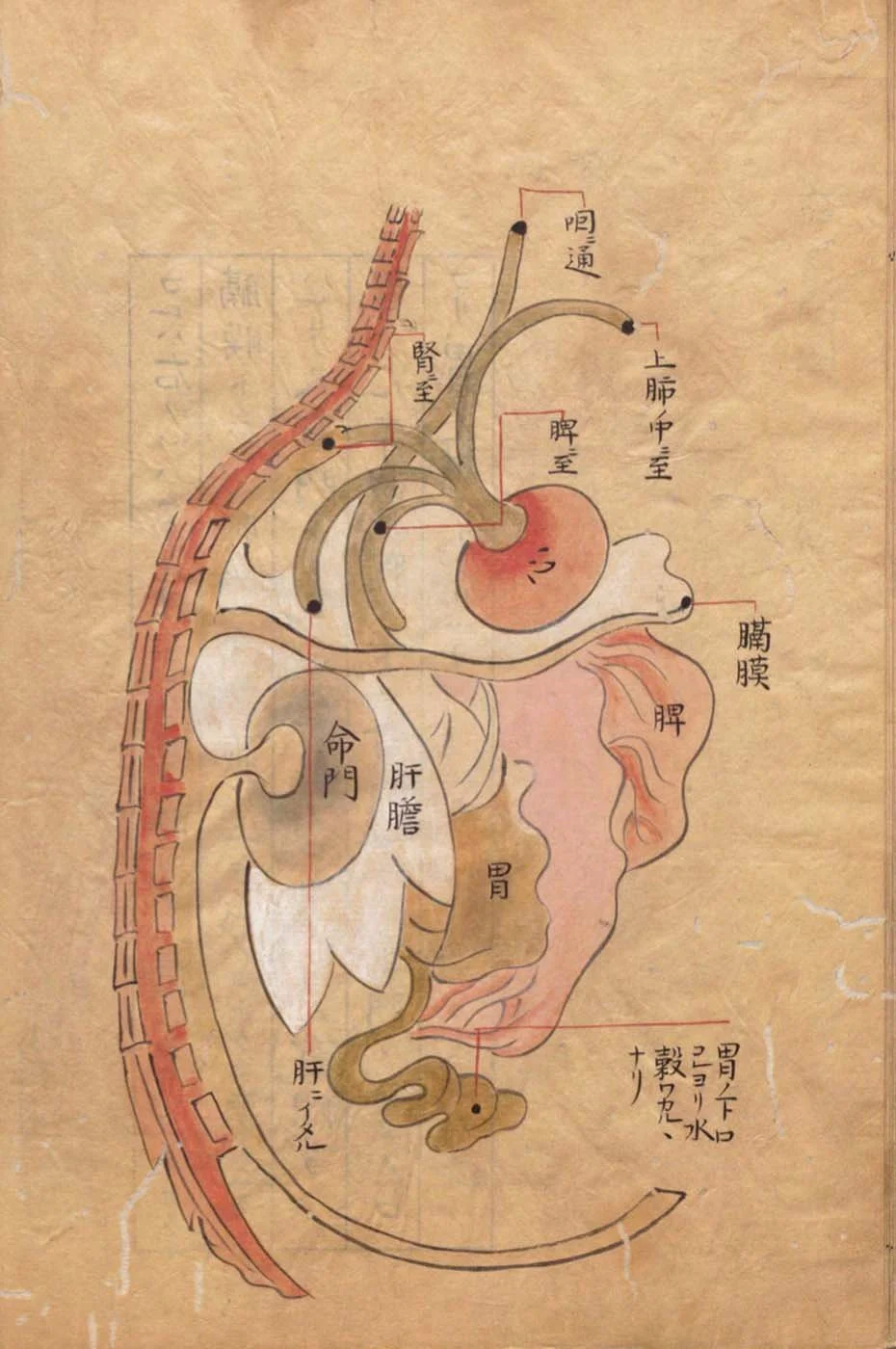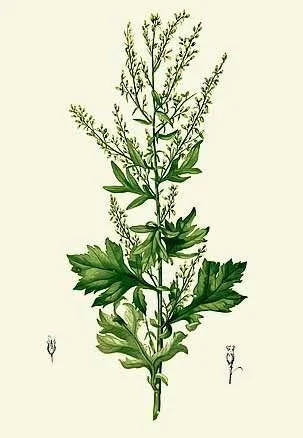
Acupuncture
How does it work, and how can it claim to treat such a broad variety of conditions?
It can be difficult to imagine how an acupuncture needle stimulating some distal region of the body can cause a system-wide change. It’s clear that there are precise points used to elicit a response, but how it could alleviate a headache, steady an arrhythmic heart, regulate a menstrual cycle, or restore deep rest can seem far-fetched.
While words such as qi, meridians, yin and yang, are reasonably common terms, they don’t offer much of an explanation without the context they’re from. This is not to say that a deep understanding of TCM theory is needed for healing to take place – it doesn’t. Nor does it depend on belief.
It is a process that takes place with the autonomous systems of the body – those which function without conscious input.
This is simply an explanation from a different angle, for those curious, or for those who require more of a scientific language to build trust in the process. It serves as a point of entry. And since the biomedical understanding of the human body is the predominant perspective of our time, this is a completely reasonable requirement.
It needs mention that this is by no means a direct translation. This is a description of the local and systemic effects scientifically observed which take place as a result of acupuncture therapy. The results, and the way the results are achieved are understood from vastly different perspectives.
Local effects
The local effects of acupuncture are most easily conceived and measured by scientific means. A needle inserted causes a microinjury of the tissues, which stimulates nerves and causes a release of neuropeptides leading to an increase in blood flow and analgesic effects.1
Autonomic Nervous System
To describe the broader, multi-system effects of acupuncture, we need to look at the mechanisms associated with the autonomic nervous system (ANS). The ANS divides into sympathetic and parasympathetic nervous systems, which together modulate the physiologic functions of the whole body, appropriately responding to stimulus in the environment as the commonly known ‘fight or flight’ and ‘rest and digest’ responses.
Sensory information gained through the manipulation of tissues (i.e. acupuncture, moxa, touch) activates certain mechanoreceptors which relay the afferent information to the brain and the ANS which cause hypothalamic changes or ‘trophotropic tuning’ and an increase in parasympathetic tone. This leads to an increase in vagal activity and a positive cascade of effects through emotional, cortical and endocrine changes that are connected with deep relaxation and reduced global muscle tone.2 There also occurs significant changes in the local fluid dynamics at the site of stimulation, resulting in therapeutic effects such as changes in local blood supply, plasma extravasation, and tissue viscosity, which increase the rate of tissue repair and the regulation of muscle tone.
FASCIA
The fascial system is closely connected with the changes occurring in the ANS as described above, and it plays a key role in the body as a neural communicator, containing by far the greatest number of nerve endings within it among other types of receptors. Fascia is a type of connective tissue found encasing and entwining itself amongst muscles and organs on superficial, deep and visceral levels. Beyond its capacity to communicate and initiate changes across neural, chemical, and immune dimensions, it also acts as a tensegrity system where it has the ability to contract across planes of the body where prolonged contraction can be experienced as physical pain or other kinds of dysfunctions.
The therapeutic value in regulating fascial tone is usually connected with pain relief in musculoskeletal conditions, but also include the global effects as described above (ANS) and changes in organ function from both vagal input and mechanical tension of the fascia. This demonstrates a pathway and explanation for changes occurring across systems such as cardiovascular, gastrointestinal, and endocrine, given the intimate connection between fascial manipulation and the ANS.1
The intention with the above descriptions is to offer an entry point for those curious about acupuncture and how it works, describe with terms more familiar to most. Study of the mechanisms behind these systems of course entails a far greater depth of detail than this summary, so references are provided below for further reading if desired.
While these explanations describe some common theories of acupuncture therapy, it is still vastly different to the way it is traditionally understood and practiced. It omits the richness and subtleties gained through the direct transmission of a teacher-student relationship, and the development of felt sense guided by traditional (Qi) cultivation practices, which are considered to many revered practitioners to be the backbone of this practice.
MOXIBUSTION
What is MOXIBUSTION?
Moxibustion is a type of heat therapy which uses dried, processed leaves of the mugwort plant (Artemisia Vulgaris). The final product is a spongey, fluffy medium which is shaped into a variety of forms using different techniques, and then burnt on or near the skin. The therapeutic effects of moxa vary depending on the quality and refinement of product and the technique of application. Its use was popularised in Japan where a variety of techniques have since been developed to apply this heat in various amounts of stimulation and used as a standalone treatment, or combined as a core component of an acupuncture treatment.
Types of moxa appearing in a treatment can range from a very small soft cone (Tonetskyu) of highly refined moxa (similar to half the size of a grain of rice) to a large firmly rolled cone (Chinetskyu) of a coarser grade – the former having the effect of drawing heat deeper into the body where it can build warmth and energise a depleted system, and the latter heating a more superficial region of the body, creating vigorous circulation of blood and the dissipation or dispersion of stagnant heat. The experience of moxa is typically very enjoyable, effective, and safe.
Given the variety and control of techniques in which moxa can be administered it is suitable for the majority of presented conditions, from digestive issues to back pain, from menopause to neuropathy and the range between.
1. Cheng, K. J. (2014). Neurobiological mechanisms of acupuncture for some common illnesses: A clinician’s perspective. Journal of Acupuncture and Meridian Studies, 7(3), 105– 114. https://doi.org/10.1016/j.jams.2013.07.008 Kathleen McMeekin, Acupuncture
2. Schleip, R. (2003). Fascial plasticity: A new neurobiological explanation. Journal of Bodywork and Movement Therapies, 7(1), 11–19; 7(2), 104–116.
3. Fisher, J. P., Young, C. N., & Fadel, P. J. (2009). Central sympathetic overactivity: Maladies and mechanisms. Autonomic Neuroscience: Basic & Clinical, 148(1–2), 5–15. https://doi.org/10.1016/j.autneu.2009.02.003
4. Li, Y.-Q., Yao, J.-P., Yan, X.-Y., Wang, W., Zhang, Y.-P., Yuan, L., Hou, Y.-J., & Li, Y. (2024). Advances in acupuncture regulation on the autonomic nervous system from 2013 to 2022: A bibliometric analysis via CiteSpace. Complementary Therapies in Medicine, 80, Article 103009. https://doi.org/10.1016/j.ctim.2023.103009 SCIRP
5. Li, Y. W., Li, W., Wang, S. T., Gong, Y. N., Dou, B. M., Lyu, Z. X., Ulloa, L., Wang, S. J., Xu, Z. F.& Guo, Y. (2022). The autonomic nervous system: A potential link to the efficacy of acupuncture. Frontiers in Neuroscience, 16, 1038945. https://doi.org/10.3389/fnins.2022.1038945 Frontiers
6. Li, H., He, T., Xu, Q., Li, Z., Liu, Y., Li, F., Yang, B. F., & Liu, C. Z. (2015). Acupuncture and regulation of gastrointestinal function.https://doi.org/10.3748/wjg.v21.i27.8304
7. Ma, Q. (2020). Somato‑Autonomic reflexes of acupuncture. https://doi.org/10.1089/acu.2020.1488
8. Sánchez‑Manso, J. C., Gujarathi, R., & Varacallo, M. A. (2025). Autonomic Dysfunction. In StatPearls [Internet]. StatPearls Publishing. Retrieved from https://www.ncbi.nlm.nih.gov/books/NBK430888/
9. Slater, A. M., Barclay, S. J., Granfar, R. M. S., & Pratt, R. L. (2024). Fascia as a regulatory system in health and disease. Frontiers in Neurology, 15, Article 1458385. https://doi.org/10.3389/fneur.2024.1458385
10. Zhou, X., Zhou, J., Zhang, F., Shu, Q., Wu, Y., Chang, H.-m., Zhang, B., Cai, R.-l., & Yu, Q. (2024). Key targets of signal transduction neural mechanisms in acupuncture treatment of cardiovascular diseases: Hypothalamus and autonomic nervous system. Heliyon, 10(19), e38197. https://doi.org/10.1016/j.heliyon.2024.e38197


